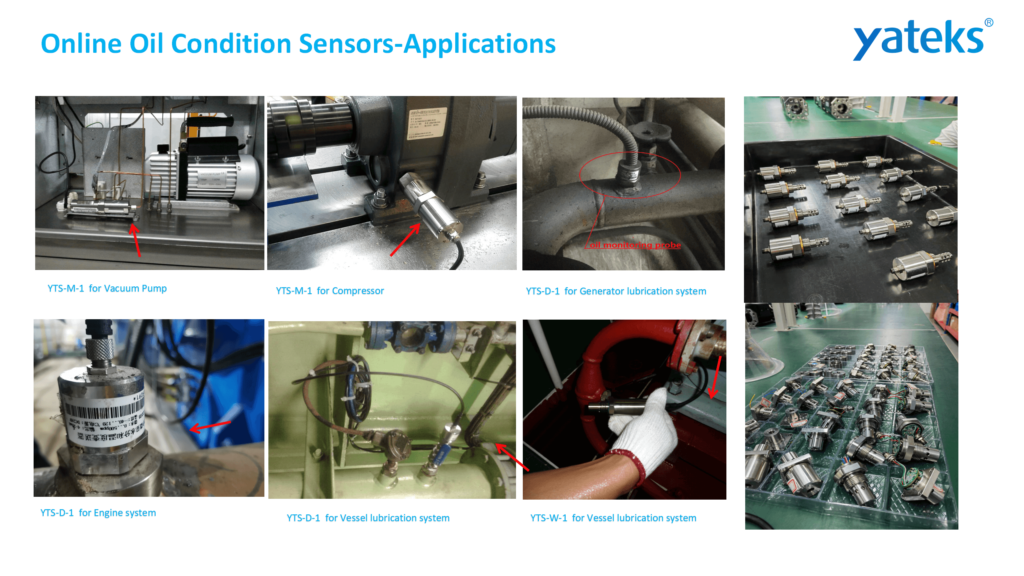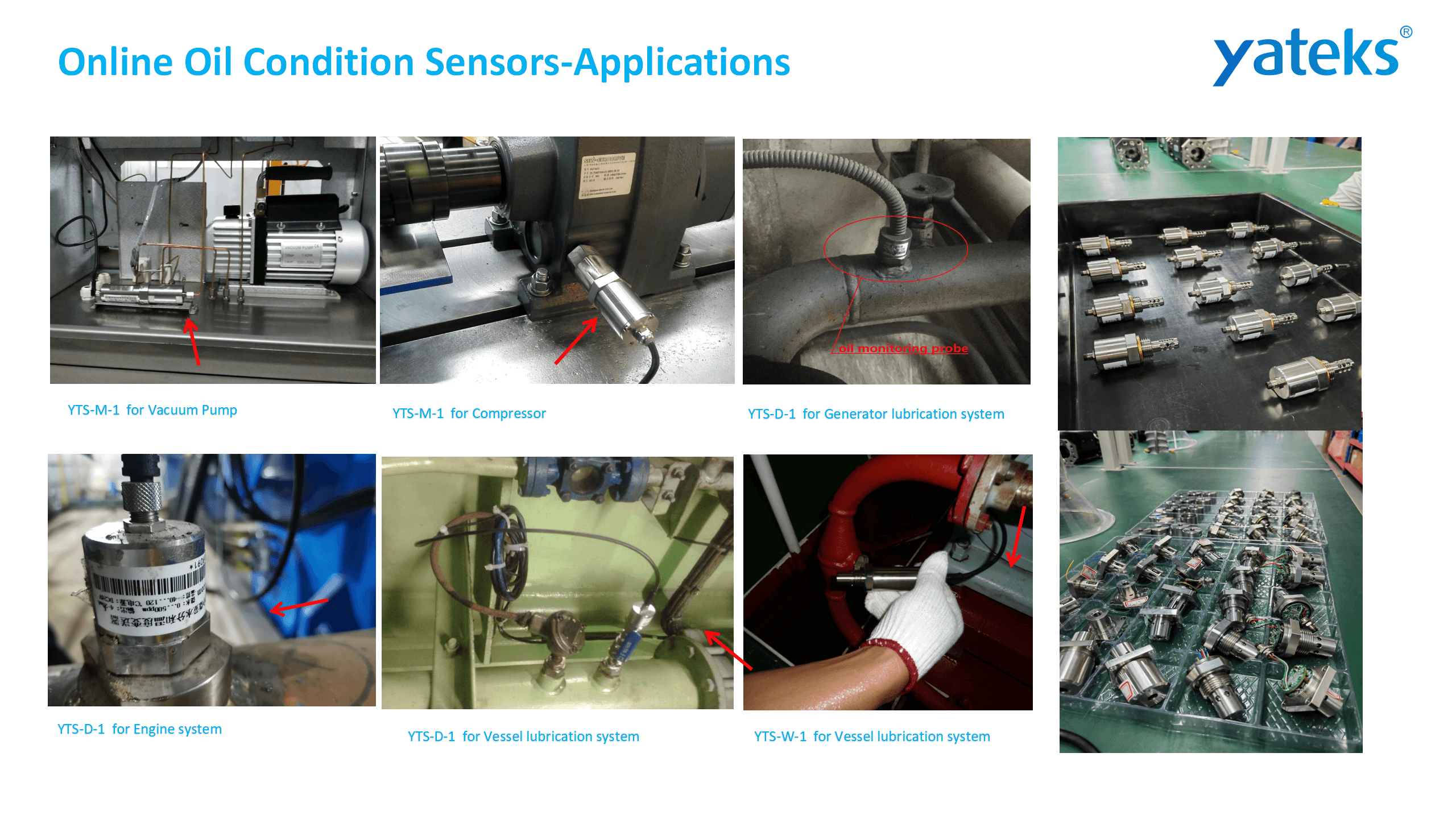Oil quality sensors play a pivotal role in various industries, including manufacturing and automotive sectors. These sensors enable real-time monitoring and assessment of oil quality, providing critical fault warnings and maintenance recommendations, promoting energy efficiency and environmental sustainability, as well as facilitating data analysis and optimization. Consequently, they enhance equipment performance, prolong operational lifespan, and ensure the stability and cost-effectiveness of production processes.
1.Notable Manufacturers of Oil Quality Sensors
(1)Pall Corporation
A leading global provider of filtration, separation, and purification technologies, Pall Corporation offers a comprehensive range of oil quality sensors designed to monitor oil contamination, moisture levels, and chemical composition.
(2)Yateks
This renowned technology firm specializes in high-quality oil testing equipment, including temperature sensors, and provides robust solutions for monitoring oil status, encompassing research, development, sales, and service.

(3)Spectro Scientific
As a manufacturer focused on oil analysis and testing equipment, Spectro Scientific utilizes advanced spectral analysis technologies to measure key parameters such as oil viscosity, oxidation levels, and metal content.
(4)Parker Hannifin
A prominent global engineering company, Parker Hannifin supplies a diverse array of industrial sensors and hydraulic equipment, including systems for detecting oil quality.
(5)Yokogawa Electric Corporation
This Japanese multinational is known for its industrial measurement and control instruments, offering various sensors and analytical tools for monitoring oil quality and performance.
These represent merely a selection of oil quality sensor manufacturers. For additional options, it is advisable to utilize search engines or reach out to industrial instrument suppliers for further information.
2.Principles of Oil Quality Sensors
The operational principles of oil quality sensors can be categorized based on the parameters they measure. Here are several commonly utilized principles:
(1)Viscosity Sensors
Viscosity is a fundamental quality parameter of oil. These sensors typically employ rotary or vibrating mechanisms. Rotary sensors determine viscosity by measuring the resistance encountered by a rotor as it rotates within the oil, while vibrating sensors gauge viscosity based on the impact of oil viscosity on vibration characteristics.
(2)Density Sensors
Density serves as another crucial quality indicator for oil products, often used to ascertain their quality and composition. Density sensors frequently utilize oscillating tube or pressure measurement techniques. Oscillating tube sensors ascertain density by observing the resonant frequency of oil within oscillating tubes, whereas pressure sensors infer density from the pressure exerted by the oil on the sensor.
(3)Temperature Sensors
Temperature is a key factor influencing oil quality. Temperature sensors employ thermocouples, thermistors, or infrared sensors. Thermocouples and thermistors measure oil temperature by detecting changes in resistance or voltage, while infrared sensors utilize emitted infrared radiation from the oil for temperature assessment.
(4)Moisture Sensors
Moisture is a prevalent contaminant that adversely affects oil performance. These sensors typically utilize capacitive or infrared techniques. Capacitive sensors detect moisture content by measuring changes in capacitance between the oil and moisture, whereas infrared sensors analyze the absorption properties of moisture in relation to infrared radiation.
(5)Particle counter sensor
Pollutants—including solid particles, metal fragments, and oxidation byproducts—negatively influence oil quality. These sensors often employ optical or magnetic methods. Optical sensors detect colored solid particles or turbidity by measuring light transmittance within the oil, while magnetic sensors assess pollutants by examining the impact of magnetic or metal particles on the magnetic field.
It is important to note that different oil quality sensors may employ distinct principles and technologies, with specific operational methods varying by sensor type and manufacturer. Therefore, it is recommended to consult the sensor’s operating manual and technical guide provided by the manufacturer for detailed principles and operational instructions.

3.Common Faults of Oil Quality Sensors
Oil quality sensors may experience various faults, including:
(1)Sensor Failure
Internal component malfunctions or circuit issues may render the sensor incapable of accurately measuring oil quality parameters.
(2)Signal Distortion
The sensor’s output signal may be distorted, leading to discrepancies between the recorded values and actual oil quality. This issue can arise from sensor aging, circuit failures, or signal processing errors.
(3)Signal Loss
A sensor may fail to deliver a normal output signal, preventing access to oil quality data. This could stem from power supply issues, connection faults, or sensor malfunctions.
(4)Reduced Sensitivity
A decline in sensor sensitivity may hinder its ability to detect low concentrations of contaminants or variations in key oil parameters.
(5)Abnormal Calibration
Faulty calibration may lead to inaccurate quality data, resulting from errors in the calibration process or inherent sensor issues.
(6)External Interference
External factors, such as electromagnetic interference or power supply noise, may disrupt the sensor’s measurement signal, leading to unstable or inaccurate output.
If faults are detected in the oil quality sensor, it is advisable to promptly inspect, repair, or replace the sensor. Regular maintenance and calibration can help ensure accuracy and reliability, while routine checks on connection integrity and environmental conditions can mitigate potential failure risks.

4.Solutions for Oil Quality Sensor Failures
Troubleshooting methods for oil quality sensor failures vary based on the specific issue. Here are some common solutions:
(1)Check Power and Connections
Initially, verify that the sensor’s power supply is functioning correctly and ensure that the connections between the sensor and the measurement system are secure. Proper power and connectivity are crucial first steps in addressing most sensor failures.
(2)Calibration and Verification
If the sensor exhibits signal drift or calibration issues, recalibration may be necessary. Follow the operating manual and manufacturer’s guidelines to restore the sensor’s accuracy and reliability.
(3)Replace the Sensor
Should the sensor remain non-functional after inspection and recalibration, replacement may be necessary. Ensure that the new sensor is compatible with the equipment and application requirements, opting for a reputable manufacturer.
(4)Fault Diagnosis and Repair
For more complex issues, professional technical support may be required to diagnose and repair internal components or circuits within the sensor.
(5)Preventive Measures
To minimize sensor failures, regular maintenance is recommended, including cleaning, checking cable connections, and shielding the sensor from environmental factors. Adhering to operational guidelines and specifications can enhance the sensor’s longevity and ensure optimal performance.
For specific sensor faults and applications, it is advisable to refer to the sensor’s operating manual or consult the manufacturer for detailed troubleshooting guidance.

